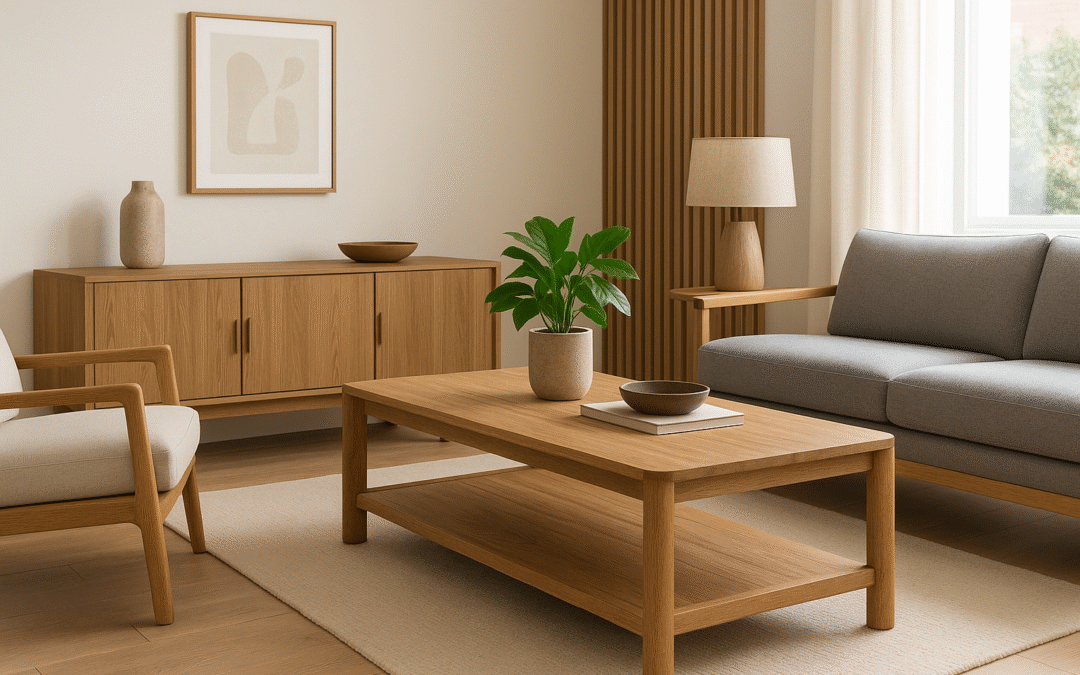The furniture industry is experiencing a remarkable transformation in 2025, where conscious consumers are moving away from mass-produced pieces toward more thoughtful, sustainable, and personalized solutions. As an authority in custom carpentry and woodworking, we’re witnessing firsthand how discerning homeowners are embracing handcrafted furniture that combines traditional artistry with contemporary design sensibilities.
The Shift Toward Sustainable and Artisanal Design
This year’s furniture trends reflect a profound shift in consumer values, with sustainability taking center stage. Sustainable furniture has evolved beyond a simple buzzword to become a fundamental principle driving design decisions. The movement toward eco-friendly materials like reclaimed wood, bamboo, and recycled metals demonstrates that homeowners no longer want to compromise environmental responsibility for aesthetic appeal.
Handcrafted furniture is experiencing unprecedented demand because it naturally aligns with these sustainability values. Unlike mass-produced alternatives, artisan-made pieces utilize responsibly sourced hardwoods from sustainably managed forests, reducing the environmental footprint while supporting local craftspeople. Each handcrafted piece represents a conscious choice to preserve traditional woodworking skills that have been passed down through generations.
The Beauty of Imperfection: Why Unique Character Matters
One of the most compelling aspects of 2025’s furniture trends is the celebration of organic forms and natural textures. The sterile perfection of factory-made furniture is giving way to pieces that showcase the inherent beauty of wood grain, natural knots, and the subtle variations that make each piece unique. Reclaimed wood furniture, in particular, brings history and character into modern spaces, with each nail hole and weathered surface telling a story.
This trend toward soft minimalism embraces curved silhouettes and natural textures while maintaining clean, uncluttered lines. The result is furniture that feels both contemporary and timeless, avoiding the cold sterility often associated with modern minimalist design.
The Investment Value of Quality Craftsmanship
The custom woodworking market is experiencing significant growth, with projections showing a 7% compound annual growth rate over the next decade. This expansion reflects consumers’ growing understanding that handcrafted furniture represents a superior long-term investment. When skilled artisans dedicate countless hours to selecting premium hardwoods like black walnut, mahogany, or maple, the resulting pieces are built to last for generations.
The meticulous attention to detail in handcrafted furniture—from hand-selected grain patterns to expertly applied finishes—creates heirloom-quality pieces that appreciate in value over time. This durability stands in stark contrast to mass-produced furniture, which often requires replacement within a few years.
Technology Meets Tradition
Interestingly, 2025’s trends also show how traditional woodworking is embracing selective technological integration. Smart furniture solutions that incorporate technology—such as built-in charging stations or integrated lighting—are becoming popular, but always in service of enhancing functionality rather than replacing craftsmanship. The key is maintaining the integrity of traditional joinery methods while thoughtfully incorporating modern conveniences.
Color and Material Trends Shaping 2025
This year’s color palette is distinctly moving toward earthy tones and darker woods. Rich browns, deep greens, and warm beiges are replacing the stark whites and cold grays that dominated previous years. These muted and earthy color palettes create spaces that feel grounding and connected to nature.
Darker wood finishes are particularly significant, as they convey permanence and sophistication. Woods like walnut and cherry, with their rich, deep tones, are increasingly preferred over lighter species for their ability to create moody, traditional atmospheres that feel both elegant and welcoming.
The Future of Furniture Design
As we move through 2025, the furniture industry’s evolution toward sustainability, craftsmanship, and personalization represents more than just a trend—it’s a fundamental shift in how we think about the objects that fill our homes. Handcrafted furniture offers the perfect synthesis of these values, providing environmentally conscious consumers with beautiful, durable pieces that reflect their personal style and values.
The growing appreciation for artisan-made furniture signals a return to quality over quantity, where each piece is thoughtfully designed and meticulously crafted to become a treasured part of family life. In an increasingly digital world, there’s profound satisfaction in owning furniture that carries the mark of human hands and the warmth of natural materials, making every piece not just functional, but truly meaningful.

